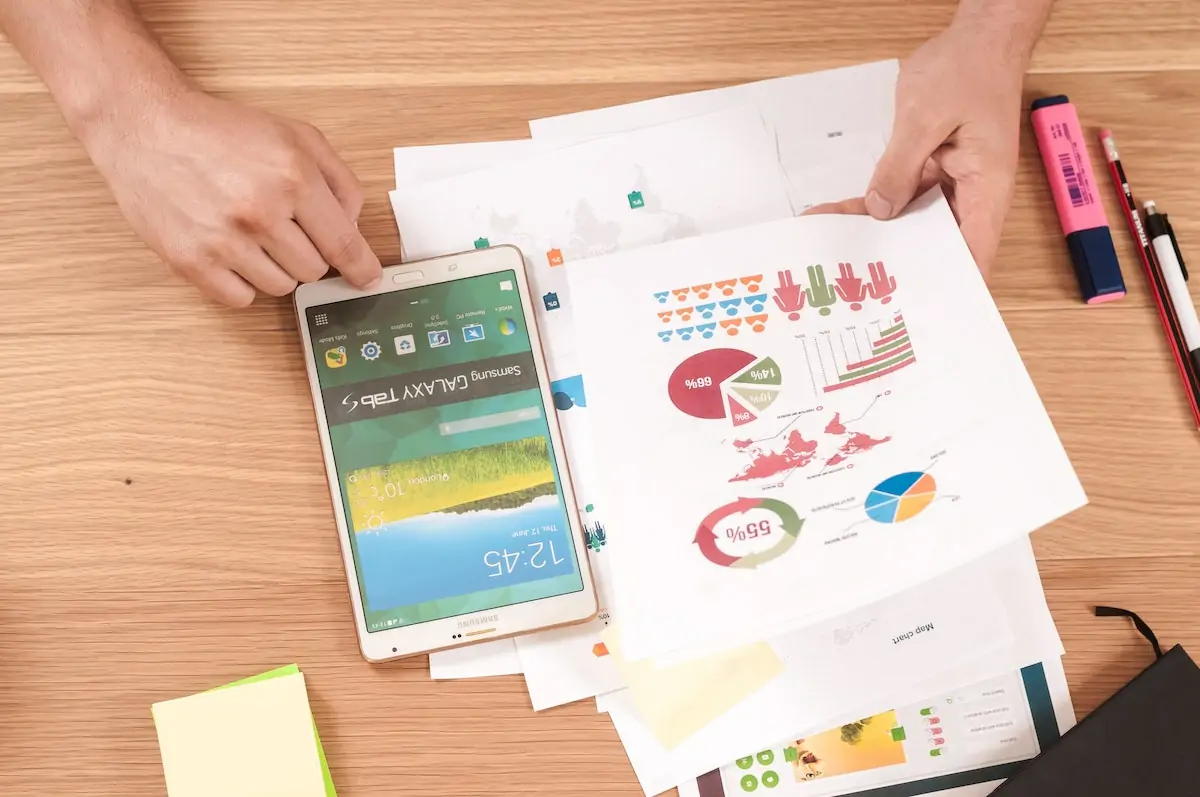
How To Read A Company Balance Sheet
12 Feb 2021This has been updated and checked by professionals as of November 2025.
Wondering how to read a company balance sheet? A balance sheet is a snapshot of what your business owns (assets), and what it owes (liabilities), at a specific point in time. By analysing the balance sheet and comparing it with information from your income and cash flow statements, you can make a realistic assessment of the financial health of your business.
The balance sheet forms part of your statutory annual accounts. It shows the value of everything that your business owns and what it owes as well, as what is due to be paid up to the last day of the financial year covered by a set of annual accounts. It shows figures for the reporting year and the previous year. The main items that a balance sheet includes are:
-
Fixed assets
-
Tangible assets
-
Current assets
-
Stocks
-
Cash at bank and in hand
-
Total current assets
-
Creditors: amounts falling due within one year
-
Net current assets/(liabilities)
-
Total assets less current liabilities
-
Creditors: amounts falling due after more than one year
-
Provision for liabilities
-
Net assets
-
Capital and reserves
-
Called up share capital
-
Shareholders’ funds
Related: 5 Tips For Filing Your Statutory Accounts On Time
Related: What Are Statutory Accounts? A Short Guide
Related: What Are Abridged Accounts?
The balance sheet - important to understand or not?The reality is that at least half of the items on the balance sheet are really only there for accountants, and don't matter much in the real world. However, the other half of the items are vital.
Understanding your business balance sheet is without doubt important. Our ethos is to ensure that we explain to clients technical accounting principles, facts and figures in plain English, practical terms. This way our clients gain valuable insights without being bamboozled or overly bored!
Balance sheet only matters for the year end accounts right?
Things like tangible assets, goodwill, shareholders’ funds and net asset value are often only calculated once per year, and typically many months after the year end has closed. If it was important, you'd want to see it at least quarterly and probably monthly.
But there are a handful of numbers which are really useful when running your small business or analysing your competitors’ books.
The ones to watch are the items most closely connected to cash (and indeed cash itself), such as working capital and debt.
Working capital
Working capital comprises trade debtors (the amount owed to the company by clients), trade creditors (the amount owed by the company to suppliers) and stock.
If your trade debtor value is going through the roof, all of the hard earned cash that would have been generated by the business is absorbed because you are effectively financing the operations of your clients.
Equally, if the company bookkeeper suddenly has a burst of activity and pays all of your contractors in one go, the decrease in trade creditors will cause a good deal of cash to be consumed.
Read More: Working capital: Whose money is it anyway?
Debt
Once cash has been properly considered, the other important part of the balance sheet for business owners is the company's debt position and in particular the value and status of any loans provided to the business.
On the balance sheet, a company’s debt is split between current creditors (for debts due within 12 months) and long term creditors. So that means if a company has a £2m loan it is repaying over 5 years, £400k will be in current creditors and the balance will be in long term creditors.
But the problem is that the current creditor figure also includes non-financing debt – things like taxation (i.e. corporation, VAT or PAYE due to HMRC) and trade creditors. HMRC has increased scrutiny on overdrawn directors’ loan accounts in recent years. If a director owes the company money at year end, the company may be liable for a temporary Section 455 tax charge, and personal tax implications can also arise. It’s important to review director balances regularly to avoid unexpected liabilities.
Many healthy companies will run a relatively large current creditor balance, because there is no need to pay HMRC or suppliers before you need to. So here are a couple of quick checks that you can do to see if these components of debt look OK:
- Trade creditors: take the number in the accounts and divide it by the sum of expenses excluding property and employees, then multiply by 365. This will give you an idea of the time it is taking the company to pay invoices. If it is around 30 days, then that’s pretty typical.
- Taxation creditors: add up the latest corporation tax bill (from the P+L), then calculate the typical outstanding PAYE bill by adding in 45% of the annual employee costs divided by 12. You can also try to make an estimate of the average VAT bill, which can be done roughly by calculating the annual revenue minus the sum of expenses (excluding property and employees) multiplied by 20% divided by 4. If when you add all of this up, it ties broadly to the number in the balance sheet, that’s about what you would expect for a company operating normally.
- Bank loans: once you have added up the bank debt in both current and long term debt, you need to compare this to the EBITDA. In today’s lending environment, most banks and alternative lenders typically offer SME borrowing in the range of 1× to 2× EBITDA, depending on sector, collateral and cash flow stability. Higher multiples may be available only where strong security or predictable recurring revenue exists.In today’s lending environment, most banks and alternative lenders typically offer SME borrowing in the range of 1× to 2× EBITDA, depending on sector, collateral and cash flow stability. Higher multiples may be available only where strong security or predictable recurring revenue exists.
Related: How To Shut Down A Limited Company
Related: What is a Director’s Loan Account?
Is debt risky to your business?
By giving you an insight into debt and its impact on your business, the balance sheet can provide a useful guide to the stability of your financial position. It does that by giving you an indication of your net debt position. You can calculate that by subtracting cash and cash equivalents from your total liabilities.
If you have more debt than cash, that’s called a ‘net debt position’. But if the balance sheet indicates you have more cash than debt, your business is described as ‘net cash’.
If you are in a net debt position, is that something to worry about? Not necessarily.
It could be that you are borrowing or using cash to finance growth, push through an important project or increase stock or other resources to take advantage of an important market opportunity.
Debt levels may also rise due to broader economic pressures such as inflation, rising interest rates, supply-chain disruption or increased operating costs, rather than poor financial management.
A useful way to assess your debt position is to compare your debt level with similar size businesses in your sector. Debt levels typically vary from sector to sector, so don’t just make simple comparisons with other small or medium businesses.
There is also a useful ratio that you can use to assess your debt position. Take your EBITDA (earnings before interest, tax, depreciation and amortisation) figure and divide it by the total debt shown on the balance sheet. The ratio indicates how much debt your business holds in relation to its earnings. Again, you can use that ratio to compare your position with other businesses in your sector.
Take action
Understanding a balance sheet is an essential process in running your business, but it’s equally important to take action on your findings. That’s particularly important if you find you have a poor debt position.
If, for example, your customers owe you large amounts, this weakens your cash position so you should aim to impose tighter payment terms. Similarly, you should aim to get the most favourable terms from your suppliers.
That’s a simple first step but an experienced accountant can help you go further and use the balance sheet to give you even greater insight into your financial performance. By understanding the figures and using the information to take action, you can identify ways to improve your business and/or reduce risk.
Accounts and Legal can help
Understanding all the information on a balance sheet can be complicated and time-consuming. Our team of small business accountants and Xero accountants are highly-experienced in helping firms with the preparation and analysis of their balance sheets.
Get in touch with us today for further advice on 0207 043 4000 or info@accountsandlegal.co.uk.
You can also or try our instant accountancy quote, or get in touch if you’d like to organise a business valuation.























